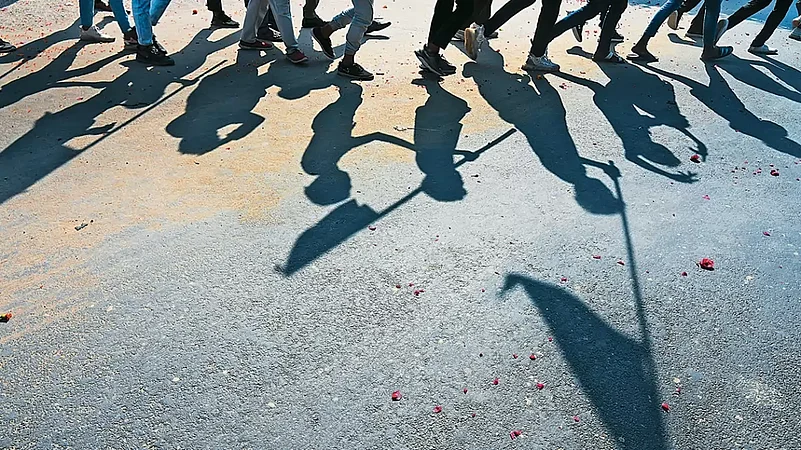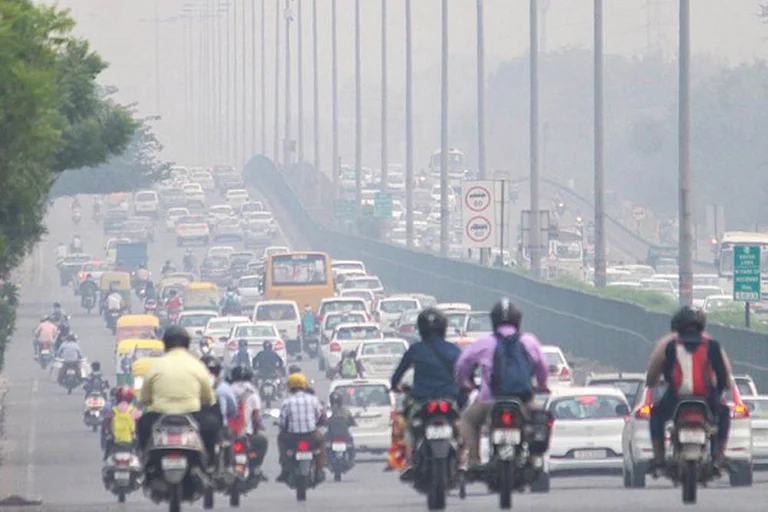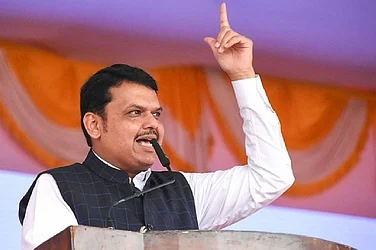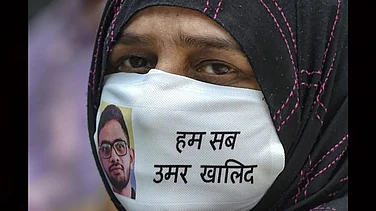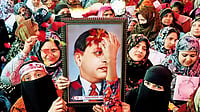Democracies across the globe are undergoing a deep churning and we do not know, as yet, if this will eventually settle down into a more inclusive social equilibrium challenging old and conventional understanding of social change, or remain stuck as a prolonged period of uncertainty bordering on a nihilistic outlook. This special issue cannot possibly address this complexity and provide an easy answer, but what it can certainly do is to throw up new questions that have been waiting on the margins to gain a better grip on what this new global churning is all about.
The rise of the ultra-Right and its cultural nationalist politics are a symptom, and not the substance of the current uncertainty. It is part of the crisis and not its resolution. The crisis is much larger than what is represented by the Rightwing political mobilisation. If the global rise of the Right is a part and not the (exclusive) source of the crisis, then we need to locate the consent to what has come to be the illiberal turn as part of a larger change the world is undergoing. As much of the recent reflections consider Rightwing politics the source and substance of the current impasse, this special issue of Outlook on ‘Hindutva beyond Islamophobia’ attempts to offer readers a fresh perspective by focusing on issues that have not been spoken and written about before.
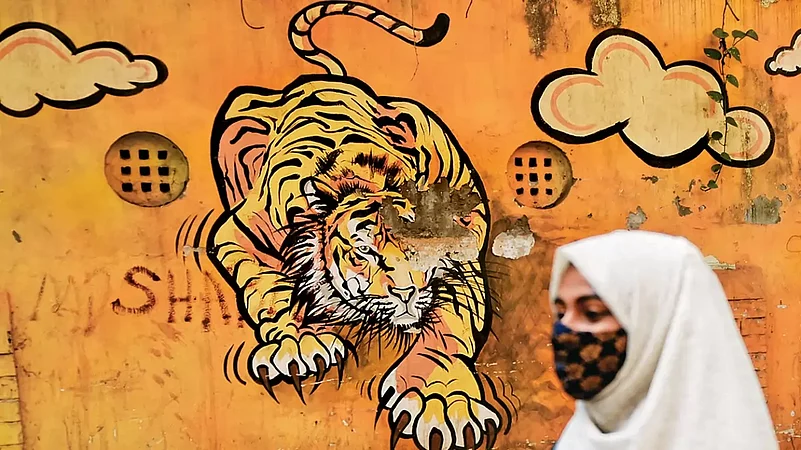
Scholars and activists have rightly lamented the rise of ‘illiberal democracies’ and ‘ethnic democracies’, but they have attributed it to polarised politics that have mobilised an ‘authentic majority’ against the vulnerable minorities. In the US, it’s the White majority against immigrants and the Blacks; in Brazil, it’s against the sexual minorities; in Turkey, it’s against the Kurdish Muslims; in Pakistan, it’s against the Ahmedis; and, in India, it’s against the Muslims. The script is the same, but the characters are different. It cannot, therefore, be made sense through a premium on ‘methodological nationalism’. There is something global about it with national/local characteristics, just like ‘capitalism with Chinese characteristics’. What then are the Indian characteristics of populist-authoritarianism? Many feel, in the last decade, India has changed beyond recognition. Even to disagree and critique this change, we will need to make better sense of how and why people are consenting to changes that look illiberal and disturbingly anti-pluralist.
It is in this context that we need to think of the Indian Right beyond Islamophobia, which is not to deny the growing vulnerability and marginalisation of religious minorities in India, but Hindutva and Islamophobia are themselves assemblages of disparate micro processes that are being independently mobilised and then brought together under an ideological system. Critiquing the ideology will remain important, but it may not capture the process. It will not say much about the micro-experiments on the ground that are not just political or even cultural (in the narrow identitarian sense), but also about latent emotions and everyday ethics. In my recent book titled Politics, Ethics, and Emotions in ‘New India’ (Routledge, London, 2023), I have argued that the substance of what we often refer to as majoritarian politics is its ability to appeal to emotions that remain latent and suppressed under modern-liberal politics. Emotions remain under-acknowledged and there is no legitimacy for thinking through emotions. Thinking emotionally is neither irrational nor is it beyond interests. Reason, interests and emotions are inextricably interconnected. Much of the new literature in ‘emotion studies’ tells us, in fact, that emotions are contextually constructed and we learn how to live, express, enact and value them. We learn to grieve through the performance of grieving. This does not mean we are not constituted by emotions. It is, therefore, both an inside out and outside—in process. Emotions that are part of our ‘inner environments’ influence our experience of the ‘outside’ world; just as the interactions with the outside world constructs within us our sense of feelings. We could, in this context, make a meaningful distinction between feelings, affects and emotions. Emotions and so do ethics have a certain autonomy from our social location of caste, class and gender. They hold the capacity to make us—both as individuals and as collectives—act in ways that cannot be thoroughly explained merely by our material identities, interactions and interests. Ethical imagination can influence our collective decisions and, therefore, appeals to emotions. Ethics carry a certain velocity and cannot be judged from the vantage point of whether they are in our self-interest or not. In fact, what constitutes our self-interest can itself be informed by emotional quotient and ethical valence.

What has come to be referred to as the majoritarian politics and the worldview of Hindutva is at a certain plain, a concerted mobilisation of what we feel is justified emotions and significant ethics in course of our collective living. What is suggested here is that Hindutva mobilises intense emotions first and then converts that into active consent for majoritarianism; it appeals to substantive ethics first and then converts it into tacit consent to authoritarianism. If we sieve through emotions from their political content, we may be able to both understand the process and its counter-narratives much better. Political parties rallying against Hindutva mostly see it as a political ideology, and therefore, a political critique is considered to be sufficient. It may work in some contexts—the way it did in Karnataka in 2023 assembly elections, but that is more of a conjecturing than a substantive explanation. Social activists mostly offer a moral critique of how toxic and exclusionary it is, but an ‘emotive majority’ may not necessarily see it that way because they experience it differently based on how it allows them to live certain emotions and enact certain ethics. It’s the performance and dramaturgy that produce certain intensity to beat the plasticity of the world as we have come to feel. Possible intensity is what is at work, and what it comes across or settles into is that of toxic majoritarianism. But then if there is no other kind of acknowledgement of the need for intense affections could people be blamed for becoming Islamophobic?
If we agree to this tentative hypothesis we could then ask a different set of questions. We could ask, for instance, how is the growing hold of offensive emotions of hatred, intolerance, bigotry, verbal abuse, sexism, casteism, racism connected to the development paradigm based on ‘faster growth’, ‘speed and scale’ ‘fastest train’, ‘tallest statue’, ‘biggest democracy’, and other such sentiments. Has speed something to do with growing consent for violence and painful indifference to suffering to the weak and the vulnerable? In our rush to be atmanirbhar, do we innocuously forget that we are actually moving into a more interdependent world? The reminder by the ecologists about interdependence and inter-generational obligations come to be perceived in our ‘inner environments’ or ‘collective sub-conscious’ as unfair imposition or a rude awakening from a sweet fantasy? Do we not then feel justified to punish the interloper? More so, if the interloper is couched as an enemy of nationalist desires and thereby opens up unaccountable space to spin conspiracies, falsehood, fake news, fudged data and statistics.

No matter what counter evidence one might present, it stands rejected. Not because we are in some simple-minded post-truth era, but because fantasy manages to gather many disparate events into a meaningful sequence to construct the reality. As Nietzsche reminds us, “Reality is a flux, an endless becoming that is beyond words and language—all language is metaphor, useful to us but ultimately detached from reality.” Is it then not true to say that unless we manage to present a different narrative that can connect the same set of events into a more appealing story our critiques of majoritarianism and even violence may not stick? In fact, accusations of Islamophobia without a counter-narrative will only further entrench the fantasy; it will come across as ships passing by the night.
The point is to bring back the focus on achieving transcendence through the conflicts and contradictions in the immanent to avoid super-imposition however noble might be our ideals. If ideals do not speak to the immanent, transcendence becomes a moral burden that the marginalised, on whose ‘behalf’ we wish to speak, can ill afford. They will reject it as being part of the same process of marginalisation. It is this tension that we are witnessing between the popular and the progressive. It is the grip on micro-histories and multiplicity of sites that can help us construct the larger narrative of peace, harmony, solidarity, secularism, democracy and constitutional morality. The latter have, instead, served as a short-hand and hold-all concepts at variance with everyday experiences. This may have something to with the social location of those espousing the secular-progressive narratives that has created a new impasse that could be figuratively characterised as ‘Left-Brahmin’ and ‘Right-Bahujan’ in the Indian context. Why is the subaltern speaking a different language? Can the discourse of power be reconciled with that of justice? If justice is an elusive power and then becomes the only language of justice, pragmatism becomes the only afterlife of ethics, and emotions tend to look irrational.
There is no clarity whether the Right is riding on an ‘unthought-out’ historical moment, or do they understand the moment better through the prism of culture, emotions and ethics? There seems to be evidence of both kinds. But what is more certain is that the Right’s toxic majoritarianism and hierarchical morality works only to the extent it converges with intense emotions and the fluidity of everyday ethics. Where it does not converge people is to judge the Right through the same prism that they seem to see and reject the ideals of secularism and constitutional morality. To the extent the Right can maintain the semblance of unity and meaning of emotions and ethics that they can rework them into the matrix of their ideological proclivities. The fact that the Right continues to depend on the pathological use of fear, violence and malice is the proof that they do not make complete sense of what is happening—even when not necessary, the Right resorts to violence and deploys it as a technique to gain legitimacy. Hegemony and violence remain parallel processes. The Right’s ascendance is more unsettling and less assuring.
They wish to freeze the moment of convergence into a permanent moment of consent and subordination, but they have failed. They have, so far, failed to generate hysteria around Islamophobia. Neither calls to create an ‘earthquake’ during the Delhi elections nor did the war cry of ‘Bajrangbali’ in Karnataka resonate with the voters. But what is more ominous is the absence of counter-narratives and performance because the opposition has not yet made sense of the sources of consent for the Right. What we therefore mostly witness is a see-saw of the emotive majority between exuberance and disenchantment—what I call the great Indian oscillating public sphere. It oscillates between polarisation and politeness, violence and civility in a seamless manner creating challenges—but of a different kind—for both the Indian Right and the progressives. As civil rights activist and theorist K Balagopal said, “Human being creates hell out of paradise and paradise out of hell”. The ‘drama of history’, in the current period, is about Hindutva beyond Islamophobia.
As many of the essays in this special issue note the various micro-contexts and sites, which become favorable mushrooming grounds for the Right. It does not begin with Muslim-bashing; it may well end up there. Consider these somewhat unique experiments by the RSS to expand its social base. A few years back, they began with a concept of ‘apartment pracharak’ geared towards mobilising urban dwellers that lack community living. “We feel that in gated communities, families often living away from their relatives feel the need for more engagement. They lead isolated lives. We started an experimental initiative some years ago. We had IT milans (get-togethers). Now, we want to expand that, hold monthly and weekly shakhas, get people interested in matters of the nation and society and give them a sense of community, and get the interested one involved socially,” an RSS functionary said. Isolation and loneliness and the absence of neighborly relations are seen as potential sources of political mobilisation.

Similarly, a few years ago, when we opened the door in response to a door-to-door campaign, we found an old acquaintance of ours, an elderly man, distributing pamphlets on colony-related issues in Hyderabad. When we enquired as to how he ended up getting involved, he narrated that after he retired as an engineer, there were no avenues for activity and he had nothing better to do to beat his boredom, and that is when local RSS pracharaks and people known to him approached him to join their campaigns for ‘social good’. He then pressed to say, “Since it is not a political activity, but around civic amenities, I decided to join them”. It is also known that RSS activists voluntarily look after people living alone and old. They offer medical facilities and in some cases financial help too. These gestures often lead to deep bonds and a sense of obligation. It is a liminal space between the private and public; between familial and community; and, between individual and the neighborhood.
Some of the methods that they draw on are the prevailing common sense and public culture that Italian Marxist Antonio Gramsci refers to as symbolising popular attitudes and beliefs, frequently accepted as “eternal” truths by ordinary people—denoting, for Gramsci, a “fragmentary” mode of consciousness. In other words, meaning-making remains a contextual, fluid, flexible and also a contradictory process. Such ‘lay normativity’ is constituted by openings and closure, and, it is often both conservative and progressive. Six months prior to the elections in Telangana, RSS pracharaks began door-to-door campaigns that involved distributing vermillion and turmeric and taking the blessings of women folk in the family by touching their feet. This, as a candidate of an opposing party informed, converted into large-scale votes for the BJP. What is the emotion and ethic that was experienced? Was it a sense of obligation, including the outsiders in the family, or an exalted sense of respect and recognition in an otherwise misogynist society? It may also involve a feeling of upholding ‘Hindu culture’ going beyond the immediacy of self-gratification. What is clear is the hold of certain emotions that can go beyond ideology and create ideals of a new normative-universal and civil solidarity.
In modern-complex societies, trust remains an elusive feeling, but an insatiable need. Political community as an ‘imagined community’ is being grounded at one level in deeply personalised everyday issues and, at another level in larger civilisational discourses. There is, in fact, a new equivalence between the two. Civilisational discourse is not undermining the nation-state, as Samuel Huntington argued in his Clash of Civilizations, but reinforcing hyper-nationalism in continuity with religion. Religious identities again are sectarian at one level, but in continuity with culture and community at another level. In effect, social fragmentation and national unity are eerily reinforcing each other. The more social groups fragment into smaller constituencies, the greater is the propensity for Hindutva to emerge as a hierarchical solidarity. We are yet to make complete sense of what kind of solidarity is this. Does it involve ‘emotional and psychological identification’ that cultural sociologist Jeffrey Alexander talks about? Or constitutional morality and fraternity that Ambedkar emphasised all through? Perhaps, it is neither but there is something new in the making that we cannot make complete sense of, as long as we arrest Hindutva and equate it with Islamophobia.
Hindutva is a much larger project of reconfiguring social power in complex societies marked by great degree of social differentiation. In this sense, Islamophobia is a red herring to divert our attention to a place beneath and besides which social relation, ideas, ethics and even emotions are being reconfigured.
This special issue is a preliminary attempt to draw our focus back to places that lay hidden and out of sight. It could well lead us to the question that I asked in my recent book: whether positive emotions of love, compassion and care hold similar velocity to counter-mobilise? Going by the response to the Bharat Jodo Yatra and the euphoria around the release of the movie Pathaan, it looks like positive emotions can stir up a utopia, but as some sociologists of emotion studies point out, altruism could well be an extremely scarce and easily exhaustible resource, unlike anger, anxiety, fear and hatred. Negative emotions of power, competition, brutality and insecurity have got institutionalised in the State and the markets, but positive emotions remain tentative and limited to acts of philanthropy and individual acts of a Good Samaritan. What would modern institutions of care and compassion look like? It is the tenuousness of these ethics and emotions that prompted Feminists and Egalitarian Liberals to monetise them in family as part of reproductive labour, while Ambedkar put a premium on State institutions, (who barely trusted the Hindu public sphere) and sensed patronage in the Gandhian ethics of love and care. It is this question that will continue to haunt us all through the remaining history of the 21st century—how to love without patronage and being self-righteous and how to be angry without slipping into hatred.
(Views expressed are personal)
Ajay Gudavarthy is a political theorist who teaches at the Jawaharlal Nehru University, New Delhi






